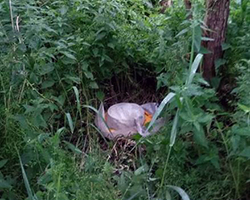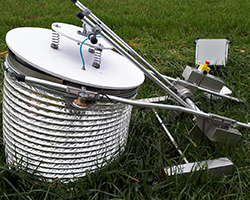Related activities
Project end date
2018
 |
 |
 |
The ClimMani EU COST action (2014-2018) hosted a range of workshops and meetings focusing on Experimental best practice, use of gradients in experimentation, data sharing and syntheses and data-model interaction.
A major outcome of ClimMani was the ClimEx Handbook of best-practice methods emerging from major ecological research networks.
Other important aoutcomes were the joint entering of partners into the TeaComposition Teacomposition.org global litter decomposition intiative, and the joint research activity using the Bayreuth Phytometer to disentangle the large-scale effects of climate from cross-site soil-ecosystem differences across a range of ClimMani sites. Finally, many papers came out of workshops and the short-term scientific missions (STSMs) – complete list of publications
Contact
For more information please contact the chair
Professor Claus Beier
University of Copenhagen
e-mail: cbe@ign.ku.dk
Publications
Terrer, C.; Vicca, S.; Hungate, B.A.; Phillips, R.P. and Prentice, I.C.. (2016) Mycorrhizal association as a primary control of the CO2 fertilization effect. Science 353, 72-74. http://science.sciencemag.org/content/353/6294/72
Estiarte, M.; Vicca, S.; Penuelas, J.; Bahn, M.; Beier, C.; Emmett, B.A.; Fay, P.A.; Hanson, P.J.; Hasibeder, R.; Kigel, J.; Kroel-Dulay, G.; Larsen, K.S.; Lellei-Kovacs, E.; Limousin, J.M.; Ogaya, R.; Ourcival, J.M.; Reinsch, S.; Sala, O.E.; Kappel-Schmidt, I.; Sternberg, M.; Tielborger, K.; Tietema, A. and Janssens, I.A. (2016) Few multiyear precipitation-reduction experiments find a shift in the productivity-precipitation relationship. Global Change Biology, 22, 2570-2581. https://onlinelibrary.wiley.com/doi/10.1111/gcb.13269/full
De Boeck, H.; Vicca, S.; Roy, J.; Nijs, I.; Milcu, A.; Kreyling, J.; Jentsch, A.; Chabbi, A.; Campioli, M.; Beierkuhnlein, C. and Beier, C. (2014) Global Change Experiments: Challenges and opportunities, Bioscience 65, 922-931. https://academic.oup.com/bioscience/article/65/9/922/237525/Global-Change-Experiments-Challenges-and
Poeplau, T.; Kätterer; N. I. W.; Leblans and Sigurdsson, B.D. (2016) Sensitivity of soil carbon fractions and their specific stabilisation mechanisms to extreme soil warming in a subarctic grassland –Global Change Biology (23),1316–1327. DOI: 10.1111/gcb.13491
N. I. W. Leblans, B. D. Sigurdsson, P. Roefs, R. Thuys, B. Magnússon, and I. A. Janssens (2014) Effects of seabird nitrogen input on biomass and carbon accumulation after 50 years of primary succession on a young volcanic island, Surtsey –Biogeosciences, 11,. doi:10.5194/bg-11-6237-2014.
Krassimira Ilieva-Makulec, Brynhildur Bjarnadottir and Bjarni D. Sigurdsson (2015) Soil nematode communities on Surtsey, 50 years after the formation of the volcanic island. I Icelandic Agricultural Sciences 28, 43-58, DOI: 10.16886/IAS.2015.05.
Hiltbrunner, E.; Aerts R.; Bühlmann T.; Huss-Danell K.; Myrold D.D.; Reed S.C.; Sigurdsson B.D.; Körner C. (2015) Ecological consequences of the expansion of N₂-fixing plants in cold biomes.Oecologia, 176, 11-24. DOI: 10.1007/s00442-014-2991-x
Stefansdottir, G., Aradottir, A. L., and Sigurdsson, B. D.: (2014) Accumulation of nitrogen and organic matter during primary succession of Leymus arenarius dunes on the volcanic island Surtsey, Iceland, Biogeosciences, 11, 5763-5771. doi:10.5194/bg-11-5763-2014
Markus Didion, Anna Repo, Jari Liski, Martin Forsius, Michael Bierbaumer and Ika Djukic (2016) Towards Harmonizing Leaf Litter Decomposition Studies Using Standard Tea Bags—A Field Study and Model Application.. Forests 7, 167. DOI: 10.3390/f7080167
L.C. Andresen, C. Müller, G. de Dato, J.S. Dukes, B.A. Emmett, M. Estiarte, A. Jentsch, G. Kröel-Dulay, A. Lüscher, S. Niu, J. Peñuelas, P.B. Reich, S. Reinsch, R. Ogaya, I.K. Schmidt, M.K. Schneider, M. Sternberg, A. Tietema, K. Zhu, M.C. Bilton (2016) Shifting impacts of Climate Change: Long-term patterns of plant response to elevated CO2, drought, and warming across ecosystems. In: Alex J. Dumbrell, Rebecca L. Kordas and Guy Woodward, Editor(s), Advances in Ecological Research, Academic Press, 2016, Volume 55, Pages 437-473. ISSN 0065-2504, ISBN 9780081009352, http://doi.org/10.1016/bs.aecr.2016.07.001, https://www.sciencedirect.com/science/article/pii/S0065250416300149
A K. Knapp; M. L. Avolio; C. Beier; C. J. W. Carroll; S. L. Collins; J. S. Dukes; L. H. Fraser; R. J. Griffin-Nolan; D. L. Hoover; A. Jentsch; M. E. Loi; R.P. Phillips; A. K. Post; O. E. Sala; I. J. Slette; L. Yahdjian and M.D. Smith. (2017) Pushing precipitation to the extremes in distributed experiments: recommendations for simulating wet and dry years. Global Change Biology, 23, 1774-1782. doi: 10.1111/gcb.13504
Maljanen, M., H. Yli-Moijala, C. Biasi, N.I.W. Leblans, H.J. De Boeck, B. Bjarnadóttir and B.D. Sigurdsson 2017. The emissions of N2O and CH4 from natural soil temperature gradients in a volcanic area in southwest Iceland. Soil Biology and Biochemistry, 109:70-80. http://doi.org/10.1016/j.soilbio.2017.01.021
Sigurdsson, B.D., N.I.W. Leblans, S. Dauwe, E. Guðmundsdóttir, P. Gundersen, G.E. Gunnarsdóttir, M. Holmstrup, K. Ilieva-Makulec, T. Kätterer, B. Marteinsdóttir, M. Maljanen, E.S. Oddsdóttir, I. Ostonen, J. Peñuelas, C. Poeplau, A. Richter, P. Sigurðsson, P.M. Van Bodegom, H. Wallander, J. Weedon and I. Janssens 2016. Geothermal ecosystems as natural climate change experiments: the ForHot research site in Iceland as a case study. Icelandic Agricultural Sciences. 29:53-71. doi: 10.16886/IAS.2016.05
2020
Projektet vil kvantificere potentialet for at anvende efterafgrøder som et virkemiddel til at lagre kulstof og reducere lattergasudledning fra dansk landbrug.
Efterafgrøder er et effektivt virkemiddel til at reducere kvælstofudvaskning, men der mangler viden om efterafgrøders potentiale som klimavirkemiddel. De giver øget kulstoflagring i jorden, men kan potentielt både reducere (især under væksten) eller øge (især efter nedmuldning) lattergasudledningen.
Stigende miljøkrav har øget arealet med efterafgrøder, og det forventes at stige til 500-600.000 ha (20-25% af dyrkningsarealet) i de kommende år. Det er derfor vigtigt at forbedre vores viden om efterafgrødernes klimaeffekt for om muligt at kunne udnytte dem til at mindske landbrugets klimabelastning.
Projektet vil bl.a. vurdere efterafgrøder som klimavirkemiddel gennem kortlægning af variationen i biomasseproduktivitet for en række efterafgrødearter i almen landbrugspraksis, herunder hvad jordtype, frugtbarhedsniveau og dyrkningshistorie betyder.
Dernæst vil projektet for relevante efterafgrøder måle kulstofproduktion og -afsætning over og under jorden (inkl. dybe rødder), og deres nedbrydning, kulstoflagring og risiko for øget lattergasemission, samt betydningen af en række dyrkningsfaktorer. Der vil blive analyseret en række dyrkningsscenarier under forskellige klima, jordtype og landbrugspraksis for at udvikle optimale efterafgrødestrategier med maksimal klimaeffekt.
Endelig vil der i projektet blive udviklet en satellitbaseret metode til at verificere efterafgrødernes klimaeffekt.
Kontakt
Lars Stoumann Jensen
lsj@plen.ku.dk
Projekt funder
Landbrugsstyrelsen
AQUACOSM- Network of Leading Ecosystem Scale Experimental AQUAtic MesoCOSM Facilities Connecting Rivers, Lakes, Estuaries and Oceans in Europe and beyond.
Contact
Erik Jeppesen
ej@au.dk
Project funder
INFRAIA-01-2017-2019 Research and Innovation actions
2021
 |
 |
 |
Low-lying soils rich in organic in rotation are a significant source of agriculture's total greenhouse gas emissions in Denmark. Setting aside these areas and rewetting them and extensifying agricultural operations are viewed as an important tool for reducing the overall climate impact of agriculture in Denmark and elsewhere where peat soils have been drained. A key element in the extensification is to raise the water level in the soil. It is well known that this measure will quickly reduce the release of carbon dioxide from the peat soils, as the decomposition of the soil's organic material is stopped completely or strongly inhibited.
When the water level is raised, however, ideal conditions will be created at the same time for the production of the stronger greenhouse gases methane and nitrous oxide. Our understanding of the climate effect of rewetting of peat soils in Denmark is primarily based on knowledge of the short-term effect on carbon dioxide emissions and there are only a few measurements of the total greenhouse gas balance, which includes all three primary greenhouse gases. In addition, there is very limited knowledge about the development of rewetted ecosystems over time. The climate effect of rewetting as a tool, in both the short and long term, is thus subject to considerable uncertainty.
The RePeat project seeks to significantly improve our knowledge of the effect of extensification and rewetting on greenhouse gas emissions to inform operation and management of selected peat soils in Denmark. The project will investigate greenhouse gas emissions at various types of extensification of agricultural practices on peat soils in Denmark, e.g. by gentle biomass production, regulation of the water level to optimize the climate gain and natural vegetation succession of abandoned peat soils. With these new data, we will develop a calculation tool that improves the determination of specific emission factors for greenhouse gases for Danish peat soils based on the annual dynamics of gas exchange as a function of the area's hydrology, soil chemistry and vegetation.
Project manager and contact person
Jesper Riis Christiansen
jrc@ign.ku.dk
Project funder
Landbrugsstyrelsen
2022
Towards research excellence and innovation capacity in studing lake ecosystems functional structures and climate change impact.
Contact
Erik Jeppesen
ej@au.dk
Project funder
H2020-WIDESPREAD-2018-2020
Projektets mål er at kvantificere potentialet for lattergasreduktion med nitrifikationshæmmere under danske forhold, studere nitrifikationshæmmeres skæbne i jorden, udføre økotoksikologiske tests og beskrive effekter på jordbundsorganismer efter tilførsel af markedsførte produkter. Dette vil ske under relevante markforhold med hensyn til klima, jordtype og landbrugspraksis.
Kontakt
Anne Winding
aw@envs.au.dk
Projekt funder
Landbrugsstyrelsen
2023
Greenhouse gases dynamics in shallow lakes: patterns and processes from cells to ecosystem
Contact
Thomas Davidson
thd@bios.au.dk
Project funder
DFF
2020-2024.
Network of Leading Ecosystem Scale Experimental AQUAtic MesoCOSM Facilities Connecting Rivers, Lakes, Estuaries and Oceans in Europe and beyo.
Contact
Thomas Davidson
thd@bios.au.dk
Project funder
INFRAIA-01-2018-2019 Research and Innovation actions
Optimizing climate and production services of cover crops in organic arable rotations.
Contact
Jim Rasmusse
jim.rasmussen@agro.au.dk
Project funder
GUDP
2024
Nationale emissionsfaktorer for lattergas fra kvælstofgødning og sædskifter (NATEF)
Projektet vil bestemme nationale emissionsfaktorer for lattergas for relevante gødningsmaterialer og sædskifter. Projektet skal føre til en forbedret national opgørelse, men vil også levere et grundlag for at opgøre effekten af reduktionsstrategier
Projektets monitering af lattergas gennemføres i hele sædskifter (parcelforsøg med tre gentagelser) igennem to år på fire lokaliteter. Hver afgrøde i sædskiftet vil omfatte en høstparcel med langtidsmålin-ger, og et værkstedsareal med miniplots til kampagner med en række gødningsmaterialer (kvæg-, svine- og afgasset gylle samt handelsgødninger). Forsøgsstrategien sigter mod at opgøre lattergasemissioner for relevante kombinationer af jordtype, nedbør, gødningsanvendelse og fordeling af husdyr- og plantepro-duktion. Kontinuerte målinger med automatiske kamre vil levere viden om den tidsmæssige dynamik med det formål at opnå en bedre beskrivelse af specielt nedbørs betydning, og dermed bedre estimater for årlig emission.
Ny viden om markoperationer og sammenhæng med jordens vandbalance, som er kritisk for lattergas-emission, vil bidrage til at identificere scenarier med høj risiko for tab.
Kontakt
Søren O. Petersen
sop@agro.au.dk
Projekt funder
Landbrugsstyrelsen
 |
 |
 |
Reducing greenhouse gas (GHG) emissions without compromising food security and biomass use for other purposes are key research priorities. To meet these great challenges, research efforts are applied to the Danish agricultural system, showing that GHG emissions can be significantly reduced through optimized cropping systems and managements. These new production systems will fit into the biorefineries of the bioeconomic era. However, there are critical knowledge gaps for achieving (1) the underlying processes for maximizing biomass production and minimizing GHG emissions, and (2) fully documented life cycle assessments of biomass production and GHG emissions.
Contact
Ji Chen
ji.chen@agro.au.dk
Project funder
Aarhus University Research Foundation



